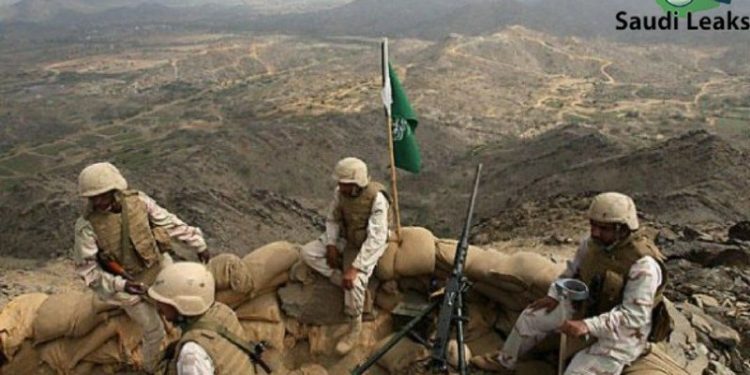
After the Houthis took control of the Yemeni capital Sana’a and several northern governorates in September 2015, Riyadh announced the launch of a “Operation Decisive Storm” to regain legitimacy, but ended up in the Yemeni mud, incurring loss of life and materiel, as well as targeting vital military sites and oil within the kingdom.
While Riyadh thought it was a blitzkrieg that would take only a few months to crush a rebel group, the kingdom is swallowing its war cup against Houthi militias, and the war bounces back on unspecified military and economic losses.
The Houthi group revealed last Saturday that it recently carried out a major military operation in the axis of Najran in the Kingdom, called “victory from God,” during which three military brigades and thousands of prisoners, including hundreds of Saudi soldiers and officers.
In the absence of official or semi-official Saudi estimates of the losses incurred in the war in Yemen, the site “Monitor Yemen” close to the Houthis that their forces destroyed more than 170 tanks in the areas of Jazan, Najran and Asir, which are adjacent to the Yemeni border.
The Houthi group also destroyed 32 tanks, 30 armored vehicles and more than 100 different vehicles, in addition to two F-16 aircraft, one of which was acknowledged by Riyadh, while the other said that it fell due to a technical malfunction. The group shot down three Apache helicopters in the border areas and three reconnaissance aircraft.
In May last year, the Saudi authorities announced that 12 Saudi soldiers had been killed in one week as a result of border clashes with the Houthis. Saudi media reported that at least 1,000 Saudi soldiers had been killed since the war began in March 2015 until mid-year. Anti-war sources say the figure is much higher.
Saudi media have said at the start of the Operation Decisive Storm that the costs of the war launched by Riyadh against the rebellion of the Houthis against the legitimate government; may reach hundreds of millions of dollars a month, noting that these costs will not burden the Saudi defense and security budget.
It is estimated that Riyadh may spend about $ 175 million a month on air strikes using 100 aircraft, and also suggested that the air campaign, which may last more than five months, may cost the Kingdom more than $ 1 billion.
According to Saudi reports, the cost of aircraft involved in the war amount to about $ 230 million per month, including operation, ammunition and maintenance, more than eight billion dollars in just three years.
If the Houthis’ air defenses are their weaknesses in the war, they have been able – with the help of Iran, as Saudi Arabia says – to take the battle into Saudi Arabia by targeting them with ballistic missiles and drones that have inflicted human and economic losses.
Riyadh relies on US Patriot missiles as an air defense system to repel Houthi ballistic missiles. The cost of the Patriot missile is $ 3 million, and the downing of a ballistic missile requires at least three Patriot missiles.
In April last year, a spokesman for the Saudi-UAE alliance, Colonel Turki al-Maliki, said the Houthis had fired 119 ballistic missiles into the Kingdom, which would only cost Riyadh tens of millions of dollars.
The Foreign Policy website reported in December 2016 that the war in Yemen cost Riyadh just $ 5.3 billion of its defense budget in 2015.
Riyadh has begun selling its assets in European markets, according to estimates by Reuters that the Kingdom is spending $ 175 million a month for bombings in Yemen and an additional $ 500 million for ground incursions, and the unexpected spending has forced Riyadh to sell $ 1.2 billion of its holdings. $ 9.2 billion in European shares.
The Yemen war also had unprecedented effects on Saudi foreign reserves. In 2015 alone, Saudi foreign reserves fell from $ 732 billion to $ 623 billion in less than 12 months.
The Houthi military threats are no longer on the southern border, but Riyadh is threatened in its heart and vital facilities, especially oil, as well as airports.
In addition to the military losses, the Houthis targeted Abqaiq and Khurais facilities belonging to Aramco in the east of the Kingdom by drones. These facilities are considered the beating heart of the oil industry in the Kingdom, where they reach most of the crude extracted for processing, before being converted for export or refining, and the strikes reduced the Kingdom’s production of crude oil. By 5.7 million barrels per day, which is equivalent to almost half of the country’s oil production.
While Crown Prince Mohammed bin Salman has said more than once that the invasion of Sanaa and rid it of the Houthis will take days and only Saudi forces, the facts on the ground say that a rebel militia has been able to incur the fourth largest country in the world spending on arms, including the losses of what is declared.